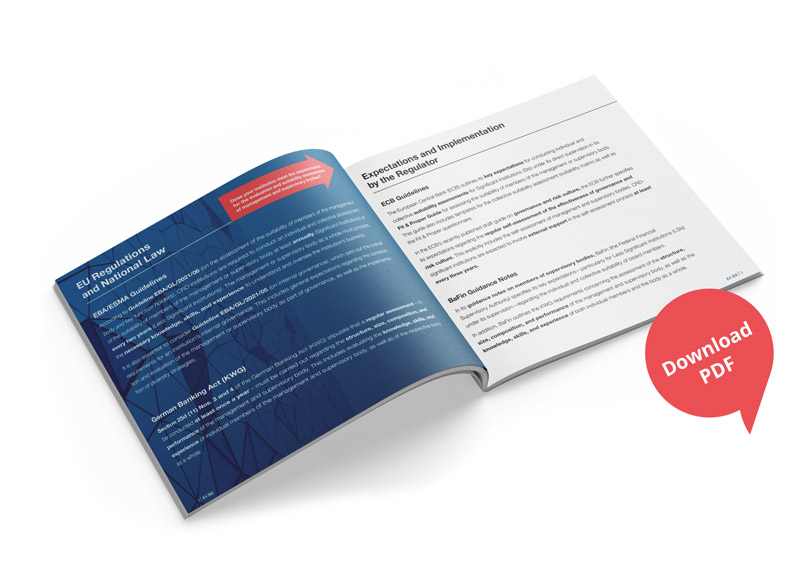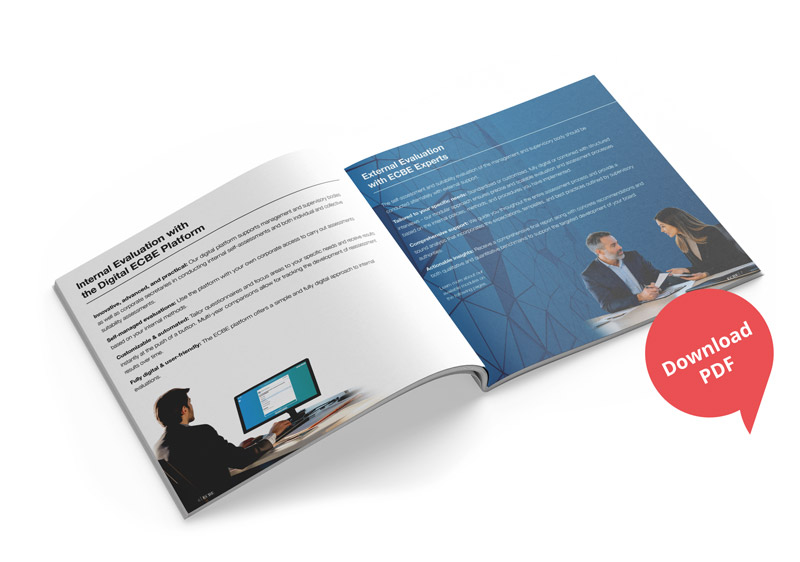Evaluation and Suitability Assessment of Management and Supervisory Bodies of Credit Institutions
A Core Element of Professional and Responsible Corporate Governance in the Banking Sector
EBA/ESMA Guidelines

According to Guideline EBA/GL/2021/06 (on the assessment of the suitability of members of the management body and key function holders), CRD institutions are required to conduct an individual and collective assessment of the suitability of members of the management or supervisory body at least annually (Significant Institutions) or every two years (Less Significant Institutions). The management or supervisory body as a whole must possess the necessary knowledge, skills, and experience to understand and oversee the institution’s business.
It is also essential to consider Guideline EBA/GL/2021/05 (on internal governance), which sets out the overall requirements for an institution’s internal governance. This includes general expectations regarding the composition and evaluation of the management or supervisory body as part of governance, as well as the implementation of diversity strategies.
German Banking Act (KWG)
Section 25d (11) Nos. 3 and 4 of the German Banking Act (KWG) stipulate that a regular assessment – to be conducted at least once a year – must be carried out regarding the structure, size, composition, and performance of the management and supervisory body. This includes evaluating the knowledge, skills, and experience of individual members of the management and supervisory body, as well as of the respective body as a whole.
Expectations and Implementation by the Regulator
ECB Guidelines
The European Central Bank (ECB) outlines its key expectations for conducting individual and collective suitability assessments for Significant Institutions (SIs) under its direct supervision in its Fit & Proper Guide for assessing the suitability of members of the management or supervisory body. This guide also includes templates for the collective suitability assessment (suitability matrix) as well as the Fit & Proper questionnaire.
In the ECB’s recently published draft guide on governance and risk culture, the ECB further specifies its expectations regarding the regular self-assessment of the effectiveness of governance and risk culture. This explicitly includes the self-assessment of management and supervisory bodies. CRDsignificant institutions are expected to involve external support in the self-assessment process at least every three years.
BaFin Guidance Notes
In its guidance notes on members of supervisory bodies, BaFin (the Federal Financial Supervisory Authority) specifies its key expectations—particularly for Less Significant Institutions (LSIs) under its supervision—regarding the individual and collective suitability of board members.
In addition, BaFin outlines the KWG requirements concerning the assessment of the structure, size, composition, and performance of the management and supervisory body, as well as the knowledge, skills, and experience of both individual members and the body as a whole.
Your Experts for Evaluations and Suitability Assessments - ECBE supports you in meeting the Requirements for your Management and Supervisory Body

ECBE is a corporate governance consulting firm specialized in conducting evaluations and suitability assessments, and is part of Mercer | hkp/// group. With an innovative and proven approach, ECBE effectively supports management and supervisory bodies of credit institutions in meeting the regulatory requirement for regular collective suitability assessments, as well as in reflecting on the structure, composition, and performance of their boards. Our goal is to enhance the effectiveness, dynamics, and functioning of governance bodies through structured reflection and practical, best-practice-based recommendations.
